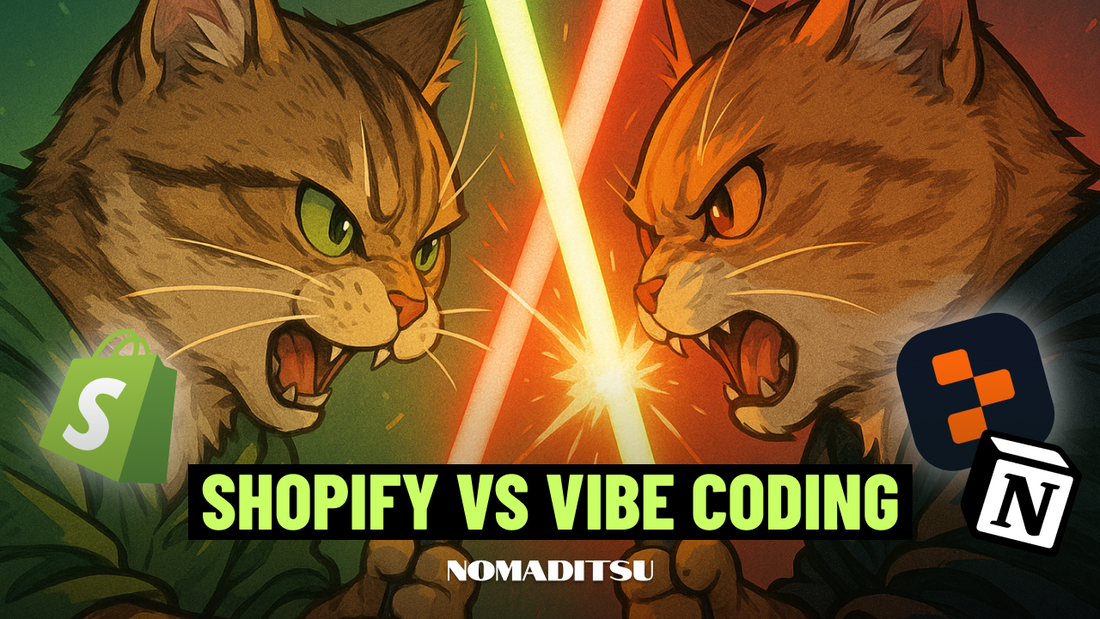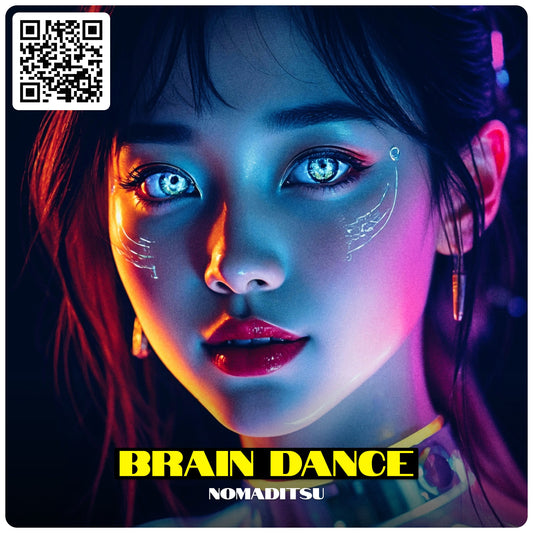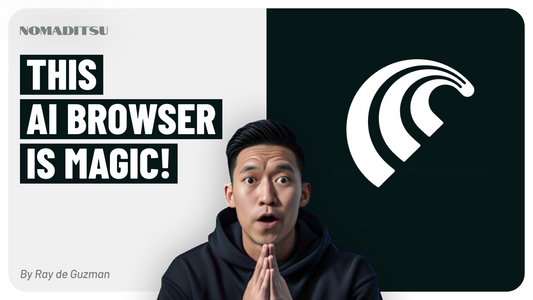
Why I Chose Shopify Over Vibe Coding My Site (And Why You Should Too)
Ray de GuzmanListen to article
Disclosure: I access Shopify through a benefit from my prior employment with the company. All opinions are my own.
When I started building my personal brand around Nomaditsu earlier this year, I faced a classic tech decision that probably sounds familiar: build something custom with AI tools or use an existing platform?
My initial instinct was to go the vibe coding route - spinning up something on Replit with AI assistance, pulling data from Notion (which is basically my digital brain), and creating exactly what I wanted without platform constraints. Makes sense, right? All my content organization already lives in Notion, so why not just build a site that pulls directly from there?
But after weeks of weighing the options, I chose Shopify instead. Here's why that decision changed everything.
The Notion + AI Temptation
Look, I love Notion. It's where I plan my AI music projects, organize my digital nomad research, track my Bangkok adventures, and basically store every thought worth remembering. Building a site that synced directly with Notion using AI-powered development felt like the path of least resistance - no duplicating content, no learning new systems, just pure efficiency.
The plan was simple: Replit Agent for the frontend, Notion API for the backend, AI to handle the complex bits, deploy and done. Clean, minimal, exactly what I wanted. Plus, vibe coding is having a massive moment right now - everyone in the AI space is talking about it.
Where Reality Hit
Then I started thinking about what I actually needed this site to accomplish:
- Sell digital products (AI music tools, courses, creative resources)
- Display my music and videos professionally
- Handle complex content relationships (blog posts, project updates, shop items)
- Scale without breaking as my audience grows
- Stay secure without becoming a part-time sysadmin
- Keep costs sustainable for long-term bootstrapping
Suddenly, the custom route started looking like a massive time sink. Every feature Shopify handles natively - payments, inventory, SEO, security updates, mobile optimization - would become my problem to solve and maintain.
The Strategic Decision Matrix
Yes, having access to Shopify at no cost influenced my decision - bootstrapping requires smart resource allocation. But the free access just accelerated what would have been the right choice anyway. Here's why:
Time allocation: I could spend months building payment systems and content management, or I could spend that time creating AI music and building my audience.
Technical debt: Custom solutions require ongoing maintenance. Shopify's team handles that while I focus on what actually generates revenue.
Professional presentation: My content needs to look polished to support premium pricing for digital products.
The Shopify Learning Curve That Paid Off
Here's where it gets interesting. Learning Shopify's metaobjects system initially felt like unnecessary complexity. Why learn their way of doing things when AI could just code exactly what I wanted?
But once I figured out how to structure my content as metaobjects - YouTube videos with embedded players, music singles with streaming links, project updates with rich media - I realized something profound:
I'd accidentally learned enterprise-level content management without needing to be a developer.
What I Actually Built
My current setup gives me:
- Unified content discovery - fans find my music, videos, and articles in one flowing experience
- Professional presentation - everything looks consistent and polished
- Easy updates - change a metaobject once, it updates everywhere it's referenced
- Built-in monetization - selling digital products just works
- Zero maintenance overhead - Shopify handles security, updates, and scaling
- Sustainable costs - platform scales with revenue rather than requiring upfront investment
The dual content approach I developed (metaobjects + blog posts) gives me structured data benefits while maintaining the natural blog discovery experience. Try doing that with a basic Notion-to-web setup, even with AI assistance.
The Skills I Didn't Expect to Gain
Learning metaobjects taught me to think like a content architect rather than just a content creator. I now approach content as structured data that can be repurposed, cross-referenced, and presented consistently across different contexts.
This isn't just about my current site - it's a methodology I can apply to any content-heavy project. Plus, I'm positioned ahead of the curve since metaobjects are still relatively new. Most content creators haven't figured out how powerful this approach can be.
The Bottom Line
Vibe coding would have been ego-driven development. Fun for the technical challenge, terrible for the business.
Shopify let me focus on what actually matters: creating content that connects with people and building sustainable revenue streams. The platform handles all the boring-but-critical stuff while giving me sophisticated content management capabilities that would have taken months to build from scratch.
Sometimes the "boring" choice is the strategic choice. And sometimes learning someone else's system teaches you things you never would have discovered on your own.
Currently building my content empire from Bangkok while diving deep into AI music creation and digital nomad systems. Follow along for more practical insights on leveraging technology for creative freedom.
What platform decisions are you wrestling with? Drop me a line - I love talking through the strategic vs. tactical tradeoffs that actually matter for creative businesses.



